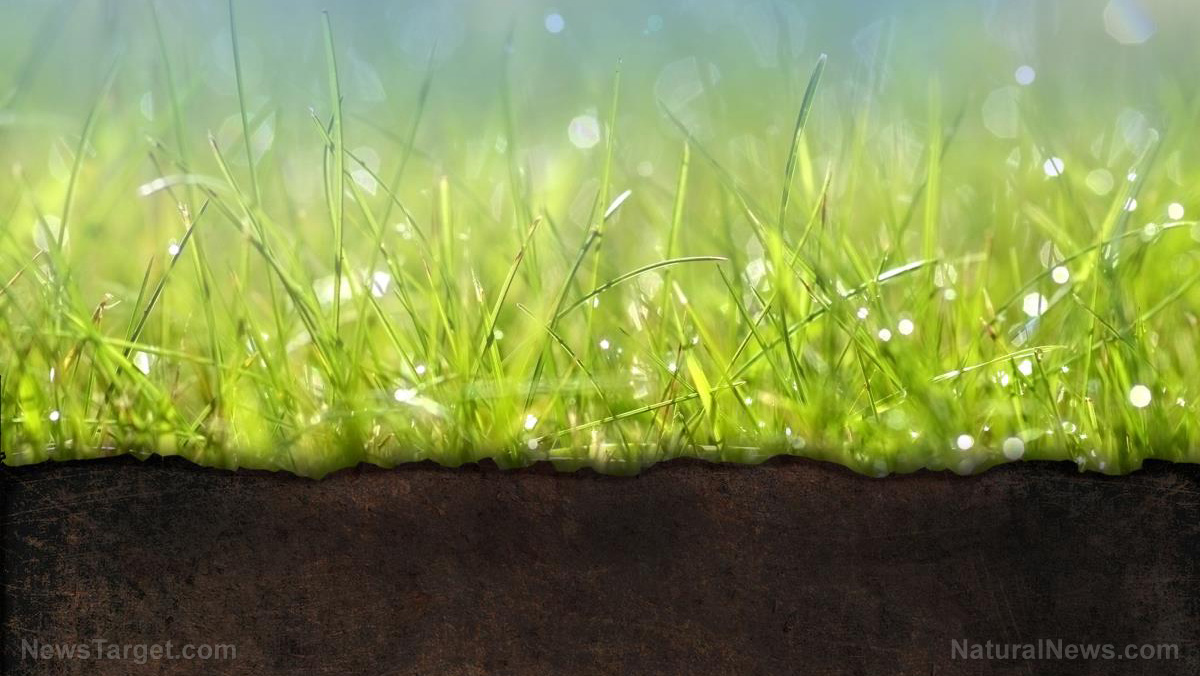An Asian grass can be the key to removing lead from contaminated soil
11/06/2018 / By Ralph Flores

Modern agricultural practices have left long-lasting environmental damage, but the latest trend in scientific research – which looks for natural ways of reversing this damage – is hopeful. Research from JECRC University in India is no exception, as they found a process which restores soil that has been polluted with lead. The study, published in the American Journal of Environmental Sciences, identified sewan grass (Lasiurus scindicus), a plant usually found in the desert, to effectively absorb lead in its roots in a process called phytoremediation.
Lead, in itself, isn’t all bad – it’s an element naturally found in soil. However, as the soil is exposed to pollution, the amount of lead increases: From a normal range of 15–40 parts lead per million parts of soil (ppm), or 15–40 milligrams lead per kilogram of soil (mg/kg), it can increase to several thousand ppm. This results in a contamination of the soil, which can present problems in some areas.
In densely populated areas, the main causes of soil lead contamination are lead-based paints and the use of leaded fuels. Agricultural soil, on the other hand, had been primarily contaminated with lead arsenate, a pesticide that is no longer in use. Unfortunately, its effects still persist in the soil, with experts suggesting that it could linger for hundreds of years more.
In India, where the researchers conducted their study, these effects are slowly taking effect. With the rapid increase in industrial growth, both wastewater and waste soil levels are also multiplying. At best, these are regulated and treated; however, the presence of heavy metals complicates this process as these cannot be degraded easily. In particular, lead is found in wastewater, solid waste disposal, as well as sewage waste and industrial activity.

If this is unchecked, nearby ecosystems are at risk of being severely damaged: It can adversely affect plant and animal health and decrease overall land productivity. In the study, the researchers identified chromium, mercury, lead, cadmium, copper, and nickel as heavy metals which cause most concern. Lead, in particular, isn’t required by plants to grow; however, increased concentration in a plant can impair growth and seed development, as well as affect its dry mass of shoots and roots. (Related: Tomato plants grown in heavy metal contaminated soil found to produce contaminated fruit.)
For the study, researchers utilized phytoremediation to remove the lead from contaminated soil. Defined as “the efficient use of plants to remove, detoxify or immobilize environmental contaminants in a growth matrix (soil, water or sediments) through the natural biological, chemical or physical activities and processes of the plant,” the procedure refers to a number of technologies that use plants to remove both organic and inorganic contaminants in soil and water. In this procedure, plants are grown in polluted soil to either remove a contaminant, contain it in their roots, or even degrade it completely. These plants are then harvested, processed, and disposed of.
The team first collected soil and water samples that have been contaminated by lead and put these in pots in differing concentrations. They then sowed sewan grass over a 105-day pot trial period. During this time, the team regularly sampled the soil and water to evaluate the amount of heavy metal was present in the soil.
Based on the findings, the researchers discovered that lead adversely affected the growth of sewan grass from the experiment. However, they also found that it was receptive to the lead and that the roots had accumulated it. During the samples, they found increased concentrations of lead in the roots on the 45th and 65th day after exposure.
“The lead accumulation in Lasiurus scindicus (mostly in its roots) confirming its potentiality as a phytoremediator and due to polluted soil pH high amount of lead accumulated in root compare to [the leaves],” the researchers concluded. They also looked at the potential of the grass to be further developed to restore lead-polluted soil.
Learn more about removing heavy metals in soil by following Environ.news.
Sources include:
TheSciPub.com [PDF]
Submit a correction >>
Tagged Under:
This article may contain statements that reflect the opinion of the author





















